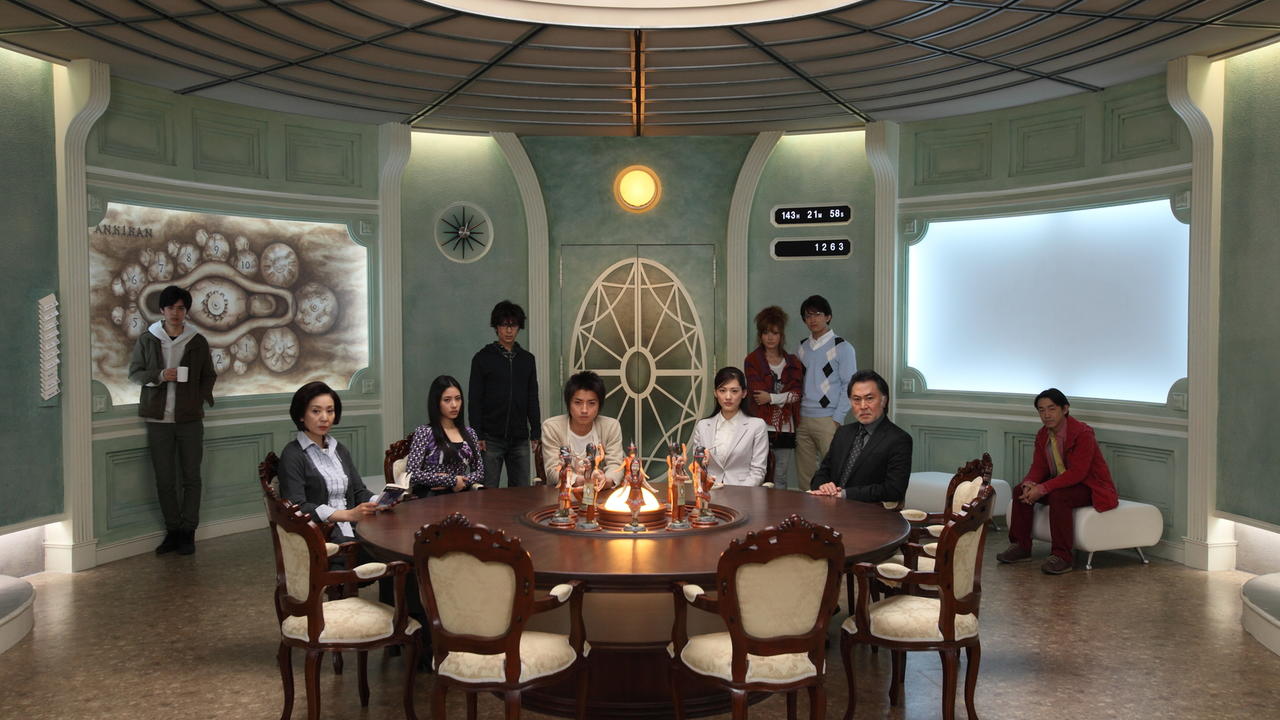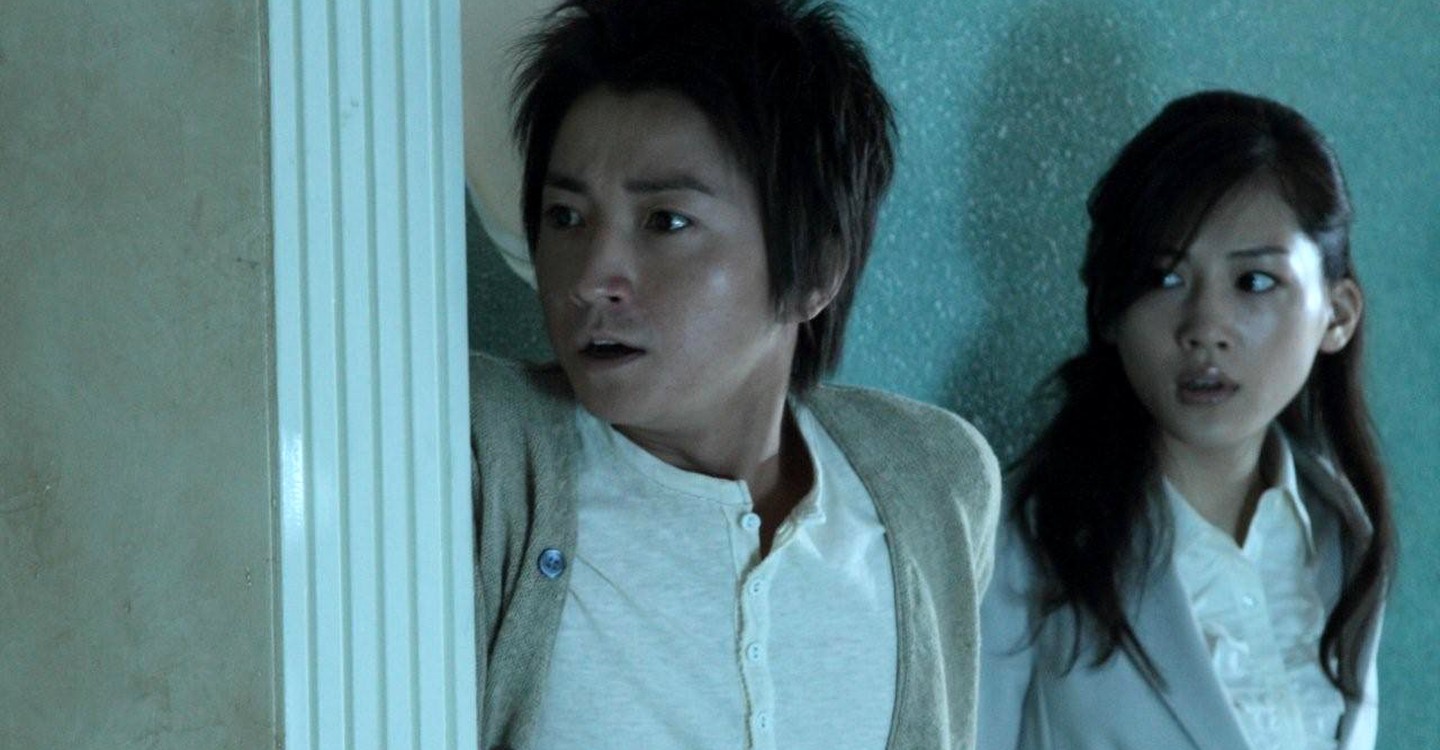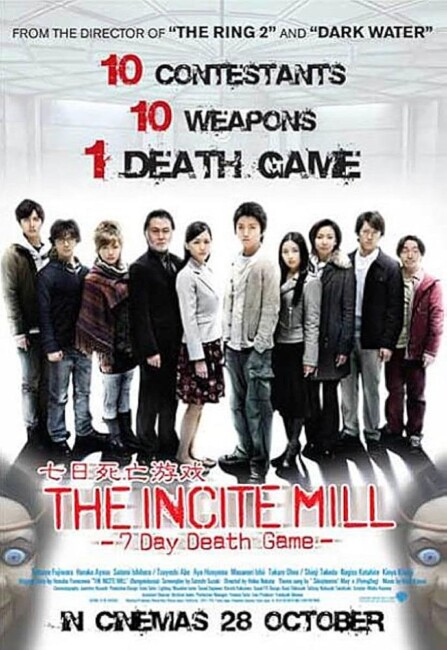(Inshite Miru: 7-Kakan No Desu Gemu)
Crew
Director – Hideo Nakata, Screenplay – Satoshi Suzuki, Based on the Novel by Honobu Yonezawa, Photography – Junichiro Hayashi, Music – Kenji Kawai. Production Company – Horipro Inc./Nippon Television Network Corporation/Warner Bros. Pictures Japan/YTV/Twins Japan.
Cast
Tatsuya Fujiwara (Rikuhiko Yuki), Haruka Awase (Shoko Suwana), Kinya Kitaoji (Yoshi Ando), Nagisa Katahira (Sawako Fuchi), Satomi Ishihara (Miya Sekimizu), Tsuyoshi Abe (Yudai Osako), Aya Hirayama (Wakana Tachibana), Masanori Ishii (Munehiro Nishino), Shinji Takeda (Sousuke Iwai), Takuro Ohno (Yukito Maki)
Plot
A group of ten people from different walks of life are brought together by the Interacticum Corporation, with each being offered the considerable sum of 110,000 yen per hour to participate in an experiment. They are to be locked inside a building for seven days – the experiment ends when either the time has elapsed or only two of the group are still left alive. When somebody is killed, it is the job of the others to work out and vote who among the group the killer is – where the dead person, the criminal and the deducing detective all receive bonuses. They are also introduced to Guard, a robot that will eliminate anybody who leaves their room after 10 pm. Inside their rooms, each of them finds a chest containing a weapon. As they settle in, several of them are found to have secrets in their past, including that one of the group may be a wanted serial killer. Dead bodies soon begin to pile up.
Hideo Nakata will probably always be remembered as the director of Ring (1998), which casts an enormous influence over not only the Japanese but the modern Asian horror film. Beyond making Ring 2 (1999), Hideo Nakata’s career has been uneven. His attempts to move beyond horror were not greeted with wide success. There was indifferent genre hackwork such as The Ring Two (2005), the sequel to the American remake of his original film, and L: Change the World (2008), while the English-language Chatroom (2010) felt like less than it could have been. His most successful and effective film so far has been the fine ghost story Dark Water (2002). (See below for Hideo Nakata’s other genre films).
The locked room horror film – in which prisoners are forced to undergo all manner of sadistic indignities and/or eliminate one another – has come into vogue since Saw (2004) and many unimaginative copies of that. There is a reasonable degree of similarity between Incite Mill and the surprisingly effective Exam (2009), which came out just before this in which a group of job applicants are locked in a room to answer a mysterious question. You could also draw analogies to the Japanese classic Battle Royale (2000) where a group of contestants (in that case schoolchildren) are placed on an island and each given a weapon in an elimination game. (To make the connection clear, Tatsuya Fujiwara, the teenage hero of Battle Royale, also plays the central character here).
That said, Incite Mill falls more into the spate of films a few years earlier that jumped aboard the faddish newness of reality tv shows and took them to the logical conclusion in having contestants not just vote each other off the island but also physically eliminate one another. See the likes of Series 7: The Contenders (2001), Slashers (2001), Halloween: Resurrection (2002), Hell Asylum (2002), My Little Eye (2002), Reality Check (2002), Cruel World (2005), Survive This (2005), Are You Scared? (2006), The Condemned (2007), Wrong Turn 2: Dead End (2007), Elimination (2010) and Camp Dread (2014).

The complaint here might be that the reality tv premise is never particularly well explained – no more than a single scene cutaway to various people watching – and the motivations of the corporation in setting this up, when revealed, are entirely murky. You keep wondering, if a corporation locks people up, provides them with weapons and grants them the freedom to murder while all of this is being broadcast to the outside world, why aren’t the police kicking the doors down and arresting everybody? Nor for that matter do I understand why locking people up together in a facility automatically means they are going to turn to killing one another – the various real world incarnations of Big Brother have been noticeably absent of things like that occurring, for instance.
Incite Mill, which is based on a 2007 novel by Japanese mystery writer Honobu Yonezawa, has clearly been intended as a homage to classic murder mysteries. From about the point where the group are seated around a table and start receiving communiques from ten small Indian figurines on the table, you realise that the film is intended as a homage to Agatha Christie’s novel and later play Ten Little Niggers (1939), which is these days usually retitled as the more acceptable Ten Little Indians. This has been filmed a number of times – as And Then There Were None (1945), Ten Little Indians (1965), And Then There Were None (1974), Ten Little Indians (1989) and And Then There Were None (2015).
Incite Mill is spoken of as a Japanese remake of Ten Little Indians, although this is clearly an analogy made by people who have not read the Agatha Christie story or seen any of the films. Certainly, the two share the central concept of a group of people trapped in a location and their numbers being killed off but Ten Little Indians also has the idea of their being brought together by a person who has a vendetta against all of them and is hiding as one of the group.

It is more fair to say that Incite Mill is construed as a homage to the whodunnit mystery – the title cards the contestants receive all have the names of classic mystery stories – Arthur Conan Doyle’s Sherlock Holmes story The Adventure of the Speckled Band (1892), the Philo Vance mystery The Bishop Murder Case (1928) by S.S. Van Dine and The Problem of the Green Capsule (1939) by John Dickson Carr, while the idea of each of the players being in a room and given a deadly weapon and a card that states the type of murder cannot help but make you think of the murder mystery boardgame Cluedo/Clue (1949).
Hideo Nakata sets the premise and its rules up well. The idea of a whodunnit homage turned into a locked room horror film has some appeal. The main problem as the story starts to transpire is that it fails to provide a sufficiently interesting detective story to stand up to the genre it desires to homage. What seems distinctly lacking is any type of dazzling deductions as clues are pieced together. Often suspects are locked up and accused on the vaguest of evidence and no more than general suspicion. Nor does any of the story grip with the twists and revelations that a good detective story mystery should. A classic mystery should wind the characters and the secrets in their pasts together in some crucial way that is constantly deflecting equal amounts of suspicion and doubt onto them – that happens with a couple of the characters but not nearly enough. The film pulls together somewhat with the revelation of how things were done at the end but it is not a particularly riveting revelation.
Hideo Nakata’s other genre films include:- the ghost story Don’t Look Up (1996); Ring (1998) and its sequel Ring 2 (1999); the ghost story Dark Water (2002); the English-language The Ring Two; the ghost story Kaidan (2007); the Death Note spinoff L: Change the World (2008); the English-language Chatroom (2010); the ghost story The Complex (2013); Monsterz (2014) about a man with mind-control abilities; Ghost Theatre (2015); a return to the Ring franchise with Sadako (2019); Stigmatized Properties (2020); and It’s in the Woods (2022); and The Forbidden Play (2023).
Trailer here


